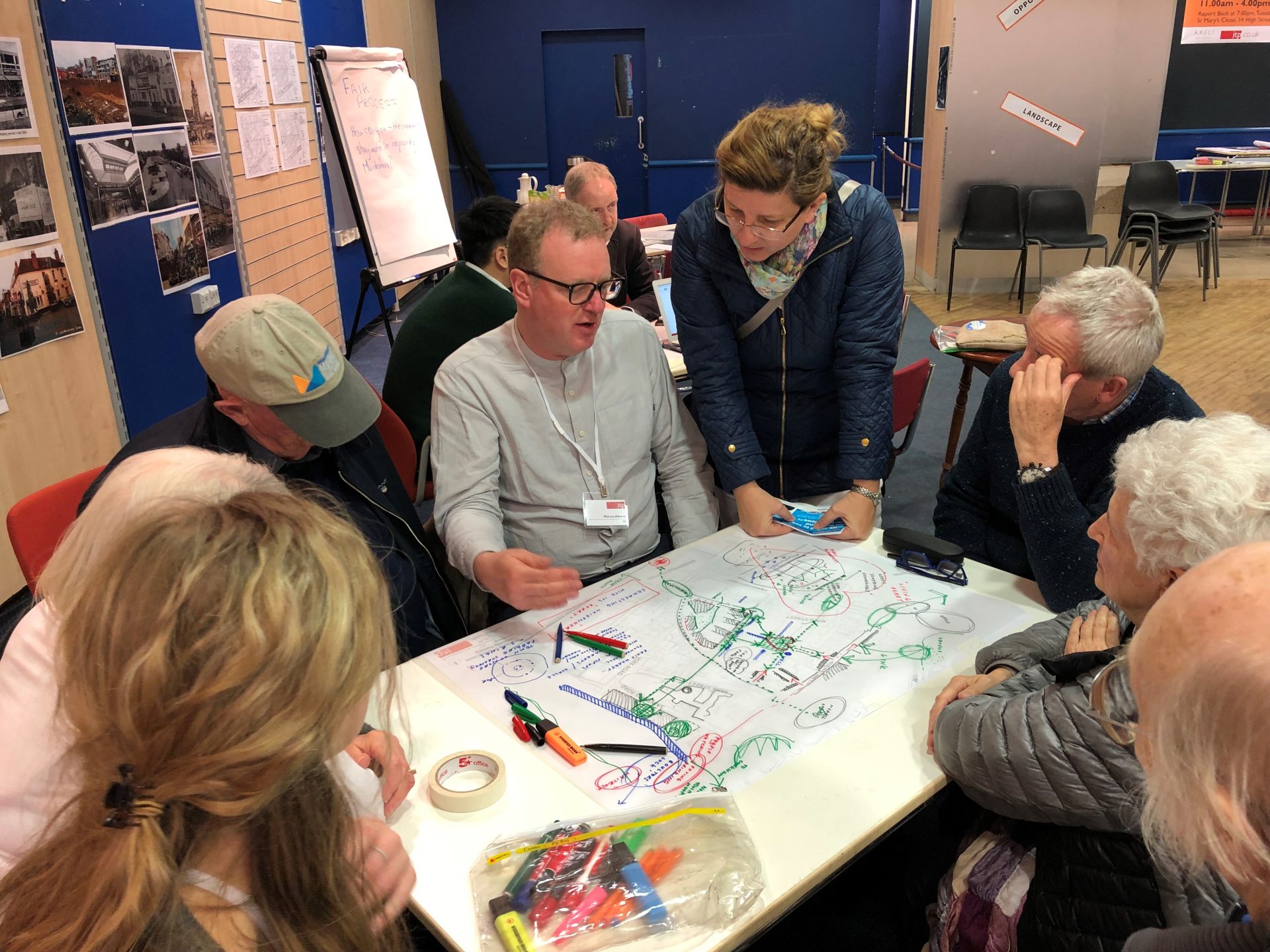Active involvement with the community throughout the design development which extended beyond the planning submission was crucial – ensuring the community could co-design the vision; proposals could be presented; issues could be discussed clearly; and feedback could be continually employed to evolve the masterplan in an iterative way. These groups ranged from residents, community groups, local schools, businesses, online communities, politicians and local media. Through our extensive community engagement, we reached over 27,000 households, resulting in 82% support being expressed for the plans.
As part of JTP’s engagement and planning process we also collaborated with a local, visually impaired teenager, who explained the need for comprehensive, inclusive design. For us to understand her insights, a senior member of the JTP team undertook a walkabout of the centre with a blindfold to create various degrees of visual impairment. We also attended the Disability and Inclusion Forum to discuss how accessibility for residents and visitors with mobility issues could be fully incorporated into the proposals. These experiences provided important feedback and offered us the time to consider how our designs moving forward should be accessible for absolutely everyone in the community. The judges admired this “innovative approach to engagement” and “genuine attempts to understand the needs of all in the community”.



